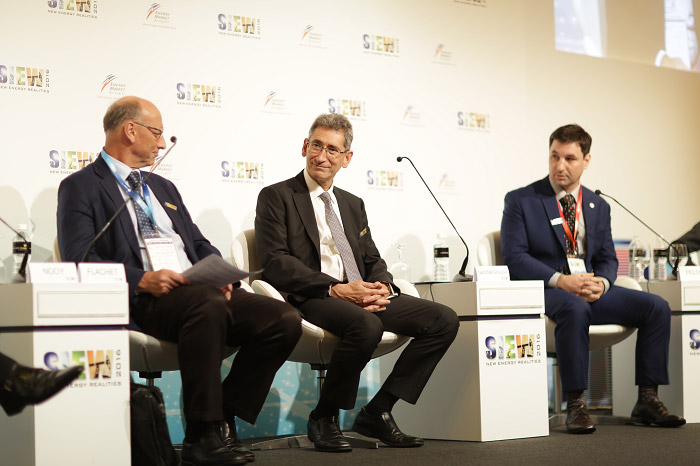
By Cheong Cui Wen
There is still much to be done to secure energy access for Asia’s remote areas. When it comes to the region’s energy goals, “it’s not just about…providing more and cleaner energy to the people who already have some,” said Mark Gainsborough, Executive Vice President of New Energies at Shell speaking at Energy Access in Focus – Technology and Investments at SIEW 2016. “It is also extending energy to those who have not had the chance.”
Investments in renewables such as wind, solar, hydropower and micro-grids are helping expand access to those without. Partnerships with social entrepreneurs can go further, creating good, sustainable solutions that improve the lives of people, agreed Jan Flachet, CEO, ENGIE Asia – Pacific and Gainsborough. As an example, Gainsborough cited the global Alliance, a multi-stakeholder, public-private partnership founded by Shell Foundation.
Established in 2010, the Alliance aims to foster the adoption of cleaner cooking solutions in 100 million households before 2020. In addition to these partnerships, government plays an important role. “Changes in regulatory framework is absolutely key to get private sector to be comfortable in [investing in remote areas],” said Allard Noovy, CEO, InfraCo Asia.
Noovy added that enabling legislation, like the feed-in-tariffs in the Phillippines, provides financial incentives for clean energy investments. On the other hand, Arun Sen, CEO of Coromandel Advisors, Matthew Peloso, founder and CEO of Sun Electric, and Gainsborough said that it is more important to push deregulation, incentivising investors to find market-based solutions.
They also highlighted pragmatism and affordability as key considerations for rural areas. On this, Peloso added that the use of small-scale solutions that do not require transmission lines can empower consumers. In the case of Africa, a US$50 solar/battery device powers people’s basic needs of telecommunication and lighting.
Panellists agreed that financing new technology projects such as this remains an issue. Investors are cautious as they are used to traditional or old energy business models. Hence, it will take time for new technology projects to be adopted. Investors’ risk appetites differ and there is no one-size-fits-all solution, yet investor education around new technologies and renewable energies is critical to interest, said Sen.
Despite the challenges, Sen said that financers and governments are increasingly open to exploring and experimenting with new and small-scale technologies. We should therefore see more developments and more connectivity to remotely-located people, he said.